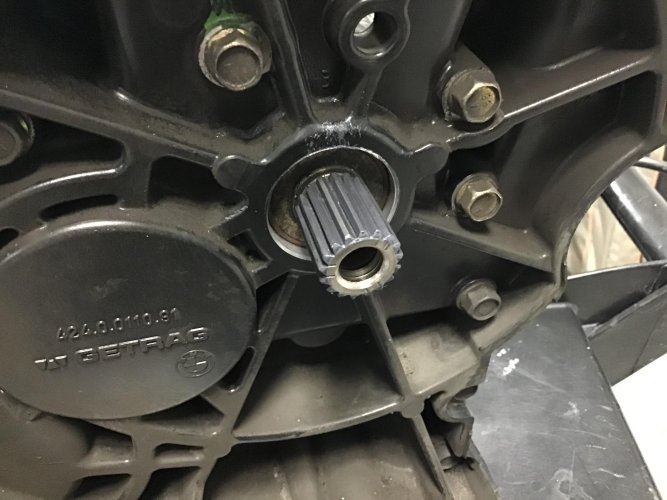DSXMachina
Member
Hello fellow oil heads. From what I've read in this sub-forum, the dreaded 'spline failure' is the biggie when it comes to stranding riders and costing big bucks to fix. Of course, if it does happen to you it is a tragedy, and it happened to 100% of...your bike!
Naturally a forum focusing on an older model isn't going to mention the anticipation and joy of waiting for the ship carrying your new purchase to arrive in a US port. It's going to mostly involve help requests from members having a problem, and members with advice about repairing problems. It tends to emphasize the 'negatives' in ownership of certain models. I've seen it happen in automotive forums. One would have, for instance, thought that all first edition BMW 335i's were on the side of the road due to the infamous high pressure fuel pump (HPFP) failure. It's all we ever talked about.
So...we talk about spline failure, but to what percent of all oilheads does it happen? I realize I will get responses saying their off warranty bike with only 6K miles stripped the spline/clutch far from home, and others will say their hard driven bike has over 100K with no sign of failure.
What is the real percentage, though? Are we dealing with 1%, 10%, 50%? Obviously unless someone at BMW has aggregated the repair numbers we may not ever know the facts. There must be someone who has a good idea. Anyone?
(It doesn't say so in my blurb below, but I am now also the happy owner of a 2003 R1150R with 11K miles. Piedmont Red. And no, no evidence of impending spline failure.)
Naturally a forum focusing on an older model isn't going to mention the anticipation and joy of waiting for the ship carrying your new purchase to arrive in a US port. It's going to mostly involve help requests from members having a problem, and members with advice about repairing problems. It tends to emphasize the 'negatives' in ownership of certain models. I've seen it happen in automotive forums. One would have, for instance, thought that all first edition BMW 335i's were on the side of the road due to the infamous high pressure fuel pump (HPFP) failure. It's all we ever talked about.
So...we talk about spline failure, but to what percent of all oilheads does it happen? I realize I will get responses saying their off warranty bike with only 6K miles stripped the spline/clutch far from home, and others will say their hard driven bike has over 100K with no sign of failure.
What is the real percentage, though? Are we dealing with 1%, 10%, 50%? Obviously unless someone at BMW has aggregated the repair numbers we may not ever know the facts. There must be someone who has a good idea. Anyone?
(It doesn't say so in my blurb below, but I am now also the happy owner of a 2003 R1150R with 11K miles. Piedmont Red. And no, no evidence of impending spline failure.)



